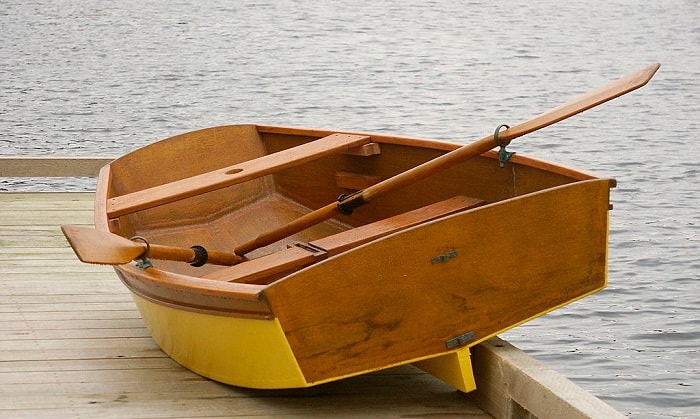
Building a Simple Plywood Fishing Boat: A Comprehensive Guide
For anglers seeking a cost-effective and personalized way to navigate the waters, building a simple plywood fishing boat presents a rewarding and achievable project. This comprehensive guide will walk you through the process from design to completion, empowering you to create a functional and durable vessel tailored to your needs.
1. Planning and Design
1.1 Determining Your Requirements
Before embarking on the construction process, carefully consider your intended use for the boat. Factors to consider include:
- Size: The length and width of the boat should accommodate your intended fishing style, the number of passengers, and the type of waters you plan to navigate.
- Type of Fishing: Different fishing styles necessitate different boat designs. Consider the need for casting space, trolling capabilities, or a stable platform for baiting.
- Power: Decide whether you require an outboard motor or prefer a purely manual rowing experience.
- Budget: Set a realistic budget for materials, tools, and any potential professional assistance.
1.2 Choosing a Design
Numerous readily available plans cater to various sizes and types of plywood boats. Online resources, boating magazines, and specialized books offer a wealth of options. Popular designs include:
- Dory: Known for its stability and versatility, the dory is a classic choice for inshore fishing.
- Dinghy: Compact and lightweight, dinghies are ideal for rowing or small outboard motors, suitable for exploring shallow waters.
- Skiff: Designed for speed and maneuverability, skiffs are often chosen for casting and trolling.
When selecting a plan, ensure it provides detailed measurements, construction diagrams, and materials specifications. Consider the complexity of the design and your own woodworking experience.
1.3 Gathering Materials
Once you've chosen your design, create a comprehensive materials list. Essential items include:
- Marine-grade plywood: Opt for plywood specifically designed for marine use, featuring moisture-resistant properties and durable construction.
- Marine-grade epoxy resin and hardener: Essential for bonding plywood panels and creating watertight seams.
- Fiberglass cloth: Reinforces the epoxy joints, enhancing strength and durability.
- Wood screws and fasteners: Use stainless steel screws for superior corrosion resistance.
- Paint or varnish: Protect the wood and enhance its appearance. Choose marine-grade paints and varnishes designed for exterior use.
- Other materials: Depending on your design, you may need additional items such as thwarts (seat supports), keel, ribs, stringers, and hardware for the motor mount, oars, and other accessories.
2. Construction
2.1 Preparing the Work Area
Choose a well-ventilated and spacious work area. Ensure a flat, level surface for assembling the boat. A sturdy workbench or a series of sawhorses will provide the necessary support.
2.2 Cutting and Shaping the Plywood
Carefully follow the plan's measurements and diagrams to cut the plywood panels. Utilize a circular saw or table saw, ensuring clean and precise cuts. For intricate shapes, consider using a jigsaw or band saw.
Remember to wear appropriate safety gear, including eye protection, ear protection, and dust masks.
2.3 Assembling the Hull
Follow the plan's instructions meticulously when assembling the boat's hull. The construction process may involve:
- Joining panels: Use epoxy resin and fiberglass cloth to bond plywood panels together, creating watertight seams.
- Adding ribs and stringers: These structural elements provide strength and shape to the hull.
- Installing the keel: The keel serves as the boat's backbone, providing stability and longitudinal strength.
Allow sufficient time for the epoxy to cure fully before proceeding to the next step.
2.4 Installing the Deck and Other Components
Once the hull is complete, attach the deck, thwarts, and any other components according to the plan's specifications. Securely fasten these elements using wood screws and epoxy.
2.5 Applying Finishing Touches
Sand the boat thoroughly to create a smooth surface for painting or varnishing. Apply multiple coats of marine-grade paint or varnish to protect the wood from the elements.
Consider adding a non-skid surface to the deck for improved traction.
3. Launching and Safety
3.1 Final Checks and Preparations
Before launching your new boat, perform a comprehensive safety check. Ensure all components are securely fastened, the hull is watertight, and all electrical systems are in working order.
Inspect the boat for any leaks or damage.
3.2 Launching Procedures
Choose a calm and sheltered location for the initial launch. Gradually lower the boat into the water, checking for any leaks or imbalances.
Once afloat, test the boat's stability and maneuverability.
3.3 Safety Equipment
Always equip your boat with essential safety gear, including:
- Personal flotation devices (PFDs): One for each person onboard.
- Navigation lights: Required for nighttime operation.
- First aid kit: For emergencies.
- Whistle or air horn: For signaling distress.
- Fire extinguisher: For onboard fires.
- Navigation chart: For safe navigation.
- Weather radio: For monitoring weather conditions.
4. Maintenance and Care
Regular maintenance is crucial to prolong the life of your plywood fishing boat.
- Clean and inspect the hull: Remove any debris and inspect for signs of wear or damage.
- Re-coat the paint or varnish: Apply fresh coats periodically to protect the wood from UV rays and moisture.
- Check for leaks: Regularly inspect the hull, seams, and fittings for any leaks.
- Maintain the engine: Follow the manufacturer's recommendations for servicing your outboard motor.
- Store properly: When not in use, store the boat in a dry, well-ventilated location to prevent mildew and rot.
Building a simple plywood fishing boat is a rewarding project that allows you to customize your vessel and enjoy the sport of fishing. By following this comprehensive guide, you can create a durable and functional boat that provides endless adventures on the water.
0 comments:
Post a Comment
Note: Only a member of this blog may post a comment.